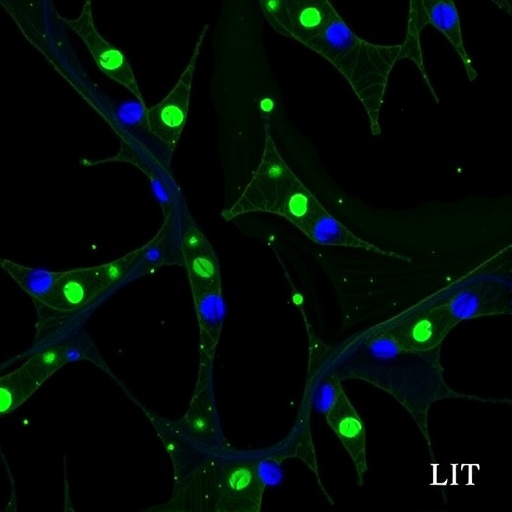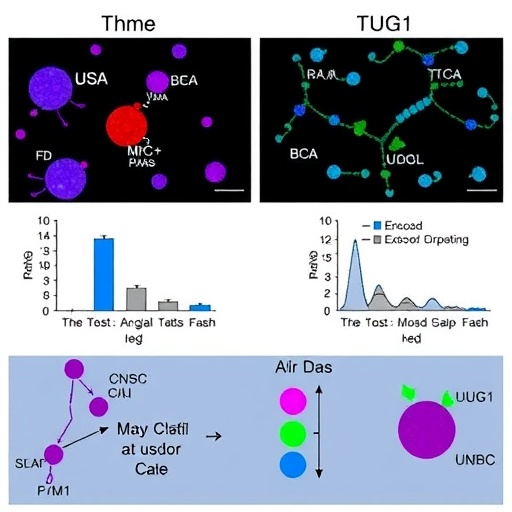
A recent breakthrough in the field of medical imaging has emerged from a collaborative study conducted by experts at Pennington Biomedical Research Center, the University of Washington, the University of Hawaii, and the University of California-San Francisco. This study focuses on an innovative method that harnesses the power of advanced three-dimensional imaging in conjunction with deep learning to enhance the analysis of body composition. The implications of this research are expansive, emphasizing the importance of accurate body composition assessments in understanding various health risks linked to conditions such as obesity, diabetes, and cardiovascular disease.
Published in the esteemed journal NPJ Digital Medicine, the study titled “3D Convolutional Deep Learning for Nonlinear Estimation of Body Composition from Whole Body Morphology” utilizes cutting-edge technology to provide an unprecedented level of detail in understanding body fat distribution and muscle mass. Traditional methods of body composition analysis often rely on linear models that have proved inadequate in capturing the complexity of human body morphology. By incorporating nonlinear estimation techniques through deep learning, this new approach marks a significant advancement in the field.
Dr. Steven Heymsfield, a key figure in this research and Professor of Metabolism and Body Composition at Pennington Biomedical, highlighted the transformative potential of this technology. He pointed out that the ability to create a detailed digital map of an individual’s body and generate highly accurate estimates relating to their composition could revolutionize clinical assessments, making the process quicker and more efficient than ever before. This method opens up new avenues for personalized healthcare.
The underlying technology of the research is rooted in the integration of 3D imaging techniques and sophisticated deep learning algorithms. By capturing comprehensive 3D representations of a person’s morphology, the researchers can analyze and predict body composition metrics with a degree of accuracy that was previously unimaginable. This is particularly crucial in a clinical environment where precise assessments can significantly influence treatment plans and health outcomes.
According to the study, the enhanced estimation of body composition is not merely an academic exercise; it holds profound implications for practical health assessments. Accurate body composition data are vital for evaluating health risks associated with obesity and related metabolic disorders. The ability to assess an individual’s body fat distribution and muscle mass in real-time can lead to better prevention strategies and tailored interventions, potentially reducing healthcare costs related to chronic diseases.
Moreover, the collaborative nature of the research underscores the importance of interdisciplinary approaches in solving complex health challenges. The team comprised experts not only in body composition but also in advanced imaging and machine learning, showcasing how diverse fields of study can converge to produce remarkable innovations. Such collaborations are increasingly becoming the norm in scientific research, fostering environments where groundbreaking ideas can flourish.
The key highlights of the study further illustrate its significance. The researchers successfully employed advanced imaging technology that captures intricate details of body shapes, which enhances the accuracy of deep learning algorithms employed in the analysis. This not only sets a new standard for body composition assessments but also emphasizes the relevance of machine learning techniques in medical applications, paving the way for future research endeavors.
One of the most compelling aspects of this research is its commitment to real-world applications. By tying the findings back to practical health implications, the study serves as a vital resource for clinicians seeking to leverage technology in patient care. The potential for more reliable assessments of body fat distribution and health risks makes this research an important stepping stone for clinicians working with populations at higher risk for metabolic disorders.
Furthermore, Dr. Heymsfield’s reflections on the research reveal an enthusiasm for the future of technology in health assessments. He expressed hope that continued advancements in imaging and data analysis can facilitate deeper insights into human metabolism. This perspective reflects a broader shift within the medical community, embracing technological innovations to enhance patient outcomes.
At its core, this study reinforces the crucial need for precision in health assessments. It challenges the status quo by offering a methodology that not only improves accuracy but also transforms the way healthcare professionals can evaluate body composition. As the technology matures, the scope of its applications is bound to expand, prompting further exploration into how these techniques can be effectively integrated into everyday clinical practices.
Despite the promising nature of this research, it is crucial to note that it is but a stepping stone in a larger journey. The study is part of a series titled “Shape Up!,” funded by significant grants from various national health institutions. The combination of public and private support indicates a collective recognition of the importance of improving body composition analysis, propelling the field toward innovative solutions.
In conclusion, this groundbreaking study not only presents a pathway toward more accurate body composition assessment but also serves as an inspiring call to action within the scientific community. It exemplifies how interdisciplinary collaboration and technological advancement can lead to significant strides in medical research. As the implications of this study unfold, it will undoubtedly contribute to a deeper understanding of human health and the vital role body composition plays in it.
Subject of Research: People
Article Title: 3D convolutional deep learning for nonlinear estimation of body composition from whole body morphology
News Publication Date: 2-Feb-2025
Web References: https://www.nature.com/articles/s41746-025-01469-6
References: Not available
Image Credits: Credit: PBRC
Keywords: Body Composition, 3D Imaging, Deep Learning, Health Risks, Obesity, Metabolic Disorders, Medical Imaging, Pennington Biomedical, Clinical Assessments, Technological Innovation.
Tags: 3D imaging technology applicationsbody composition analysis techniquescardiovascular disease preventioncollaborative research in biomedicinedeep learning in healthcaremedical imaging advancementsmuscle distribution researchnonlinear estimation methodsNPJ Digital Medicine publicationobesity and health risksPennington Biomedical Research Center innovationsUniversity of Washington health studies





